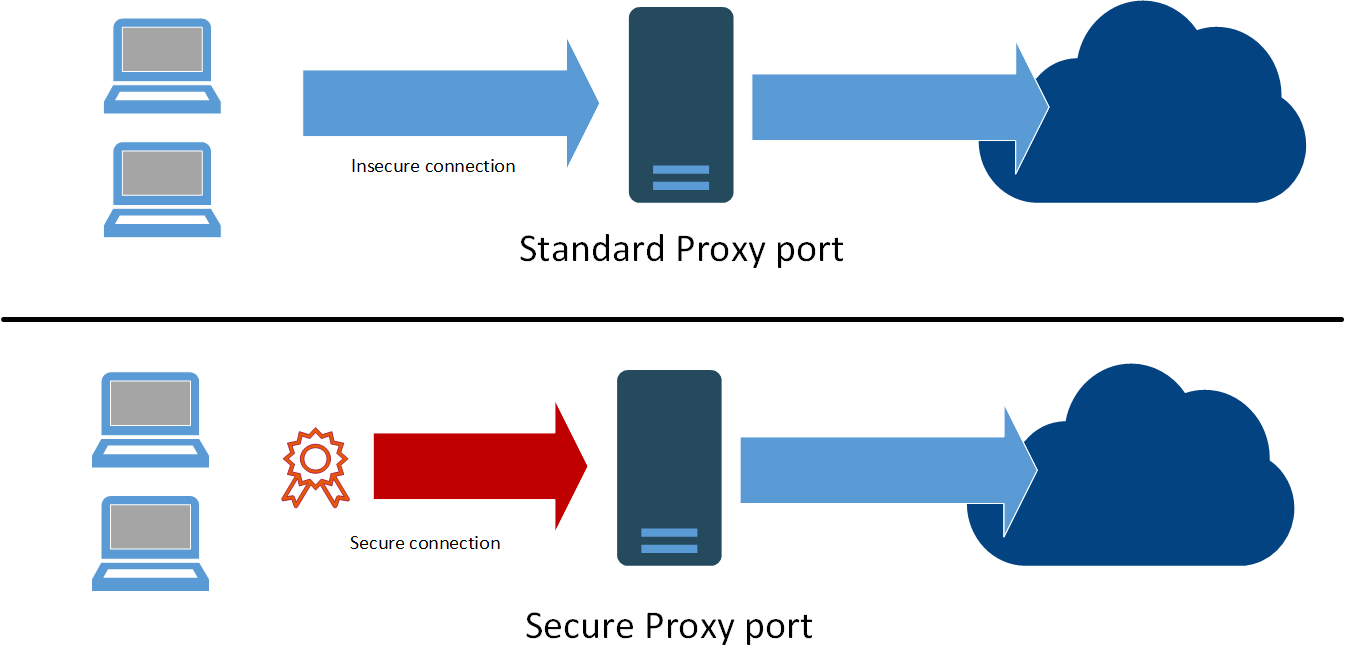A secure proxy with HTTPS is a type of proxy server that facilitates communication between a client (such as a web browser) and the internet using the HTTPS protocol for encrypted connections.
Unlike standard HTTP proxies, which transmit data in plaintext, a secure HTTPS proxy ensures that all data exchanged between the client and the proxy server is encrypted.This encryption enhances privacy and security by preventing eavesdropping and tampering with the transmitted data.
- SSL encryption is used to hide communications between browsers and proxy.

- Authentification can be used using SSL clients certificates.
- Members are identified using the SSL Client certificate
- Compatible with kerberos/NTLM/Basic authentification
- Enhanced Privacy: Encryption ensures that sensitive information, such as personal data, login credentials, and other confidential information, remains secure.
- Secure Authentication: When combined with authentication mechanisms, HTTPS ensures that the authentication data (like passwords) are encrypted, adding an extra layer of security.
Note that this method simply ensures that the connection between the browser and the proxy is made using HTTPS.
If you also need to perform HTTPS inspection and filtering (i.e. on-the-fly decryption of HTTPs flow to websites), additional configuration steps are required.
¶ 1) SSL certificate
Using a secure proxy means adopting a server certificate on the proxy and trusting the certificate in your client browsers.
You can use your own certificates by importing them into the certificate center or use Artica to generate a certificate for you.
- Generates a server certificate for the proxy.
In this article, we'll use Artica to generate a server certificate to create the proxy's ssl port.
¶ 2) Create a Secure Proxy Port
Once the server certificate has been created in the certificate center, simply add or modify a proxy port in Port Secure mode with the previously created certificate.
- Create Web Proxy secure port.
Creating a Secure Port will activate an HTTPs port that will be used by your browsers to use the proxy and browse the Internet.
¶ 3) Browser ? How to
On the browser side, it behaves as if it were connecting to an SSL-enabled website.
Except that it's a proxy.
But understand that the behavior is identical.